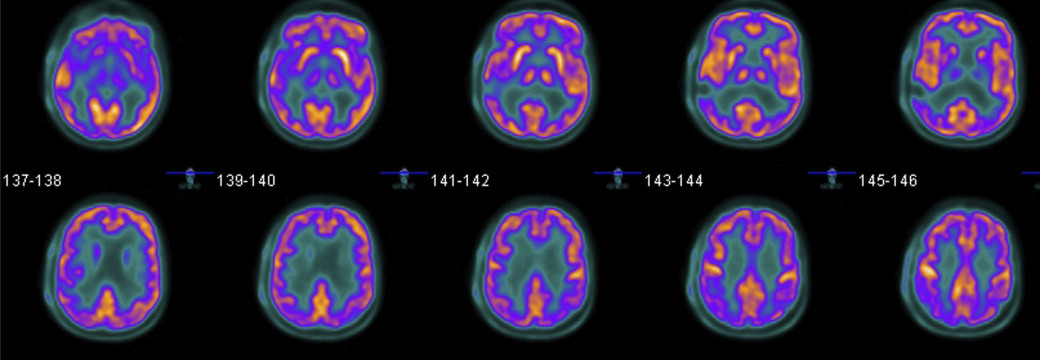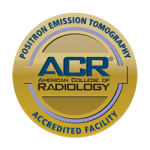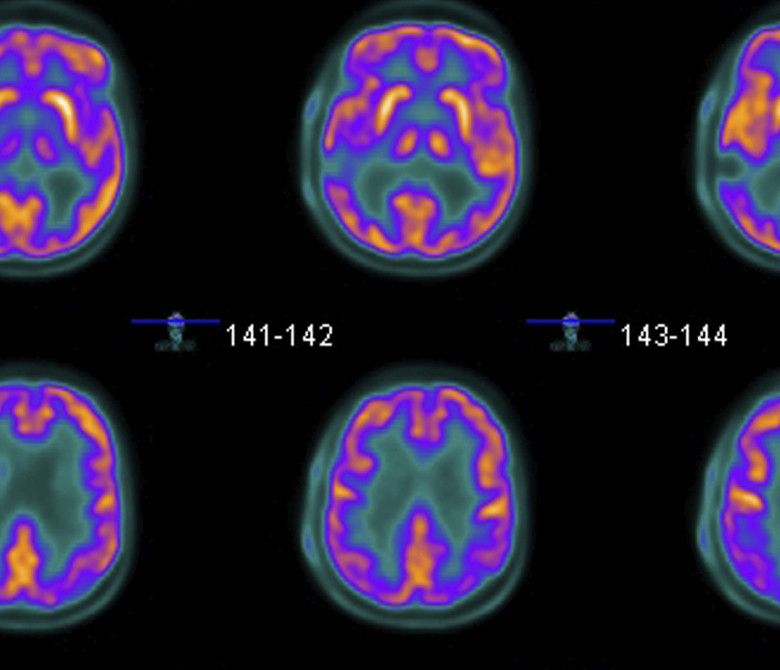Positron Emission Tomography – Computed Tomography (PET/CT)

Positron emission tomography (PET) uses small amounts of radioactive materials called radiotracers, a special camera and a computer to help evaluate your organ and tissue functions. By identifying body changes at the cellular level, PET may detect the early onset of disease before it is evident on other imaging tests.

What is Positron Emission Tomography – Computed Tomography (PET/CT) Scanning?
Positron emission tomography, also called PET imaging or a PET scan, is a type of nuclear medicine imaging.
Nuclear medicine is a branch of medical imaging that uses small amounts of radioactive material to diagnose and determine the severity of many diseases, particularly many types of cancers, heart disease, gastrointestinal, endocrine, neurological disorders and other abnormalities within the body. Because nuclear medicine procedures are able to pinpoint molecular activity within the body, they offer the potential to identify disease in its earliest stages, and evaluate a patient’s immediate response to therapeutic interventions.
Nuclear medicine imaging procedures are noninvasive, and with the exception of intravenous injections are painless medical tests that help physicians diagnose and evaluate medical conditions. These imaging scans use radioactive materials called radiopharmaceuticals or radiotracers.
Depending on the type of nuclear medicine exam, the radiotracer is either injected into the body, swallowed or inhaled as a gas and eventually accumulates in the organ or area of the body being examined. Radioactive emissions from the radiotracer are detected by a special camera or imaging device that produces pictures and provides molecular information.
CT imaging uses special x-ray equipment, and in some cases a contrast material to produce multiple images or pictures of the body. These images are then interpreted by a radiologist on a computer monitor. CT imaging provides excellent anatomic information.
The combined PET/CT scans provide images that pinpoint the anatomic location of abnormal metabolic activity within the body. The combined scans have been shown to provide more accurate diagnoses than the two scans performed separately.
What are some common uses of the procedure?
PET and PET/CT scans are performed to:
- detect cancer
- determine whether a cancer has spread in the body
- assess the effectiveness of a treatment plan, such as cancer therapy to determine if a cancer has returned after treatment
- determine blood flow to the heart muscle
- determine the effects of a heart attack, or myocardial infarction, on areas of the heart. identify areas of the heart muscle that would benefit from a procedure such as angioplasty or coronary artery bypass surgery (in combination with a myocardial perfusion scan)
- evaluate brain abnormalitie such as tumors, memory disorders, seizures, and other central nervous system disorders
- map normal human brain and heart function
How should I prepare for a PET and PET/CT scan?
Women should always inform their physician or technologist if there is any possibility that they are pregnant or if they are breastfeeding.
You should inform your physician and the technologist performing your exam of any medications you are taking, including vitamins and herbal supplements. You should also inform them if you have any allergies and about recent illnesses or other medical conditions.
You will receive specific instructions based on the type of PET scan you are undergoing.
Metal objects including jewelry, eyeglasses, dentures and hairpins may affect the CT images and should be left at home or removed prior to your exam. You may also be asked to remove hearing aids and removable dental work.
Generally, you will be asked not to eat anything for several hours before a whole body PET/CT scan since eating may alter the distribution of the PET tracer in your body and can lead to a suboptimal scan. This could require the scan to be repeated on another day, so following instructions regarding eating is very important.
You will be asked and checked for any conditions that you may have that may increase the risk of receiving intravenous contrast material.
How does the procedure work?
With ordinary x-ray examinations, an image is made by passing x-rays through the patient’s body. In contrast, nuclear medicine procedures use a radioactive material, called a radiopharmaceutical or radiotracer, which is injected into the bloodstream, swallowed or inhaled as a gas. This radioactive material accumulates in the organ or area of your body being examined, where it gives off a small amount of energy in the form of gamma rays. Special cameras detect this energy, and with the help of a computer create pictures offering details on both the structure and function of organs and tissues in your body.
Unlike other imaging techniques, nuclear medicine imaging exams focus on depicting physiologic processes within the body, such as rates of metabolism or levels of various other chemical activity, instead of showing anatomy and structure. Areas of greater intensity, called “hot spots,” indicate where large amounts of the radiotracer have accumulated and where there is a high level of chemical or metabolic activity. Less intense areas, or “cold spots,” indicate a smaller concentration of radiotracer and less chemical activity.
How is the procedure performed?
You may be asked to wear a gown during the exam or you may be allowed to wear your own clothing. You will then be positioned on an examination table. If necessary, a nurse or technologist will insert an intravenous (IV) catheter into a vein in your hand or arm.
Depending on the type of nuclear medicine exam you are undergoing, the dose of radiotracer is then injected intravenously, swallowed or inhaled as a gas. You may be asked to drink some contrast material that will localize in the intestines and help the radiologist interpreting the study.
Typically, it will take approximately 60 minutes for the radiotracer to travel through your body and to be absorbed by the organ or tissue being studied. You will be asked to rest quietly, avoiding movement and talking.
You will then be moved into the PET/CT scanner and the imaging will begin. It is important to remain still during imaging. The CT exam will be done first, followed by the PET scan. On occasion, a second CT scan with intravenous contrast will follow the PET scan.
Total scanning time for both examinations is approximately 30 minutes.
When the examination is completed, you may be asked to wait until the technologist checks the images in case additional images are needed.
If you had an intravenous line inserted for the procedure, it will usually be removed unless you are scheduled for an additional procedure that same day that requires an intravenous line.
What will I experience during and after the procedure?
Except for intravenous injections, most nuclear medicine procedures are painless and are rarely associated with significant discomfort or side effects.
When the radioactive material is injected into your arm intravenously, you may feel a pinprick where the needle enters followed by a cold sensation moving up your arm, but there are generally no other side effects. When swallowed, the radiotracer has little or no taste. When inhaled, you should feel no differently than when breathing room air or holding your breath.
It is important that you remain still while the images are being recorded. Though nuclear imaging itself causes no pain, there may be some discomfort from having to remain still or to stay in one particular position during imaging.
If you are claustrophobic, you may feel some anxiety while you are being scanned.
Unless your physician tells you otherwise, you may resume your normal activities after your nuclear medicine scan. If any special instructions are necessary, you will be informed before you leave.
A small amount of radiotracer in your body will lose its radioactivity over time. It may also pass out of your body through your urine or stool during the first few hours or days following the test. You should also drink plenty of water to help flush the radioactive material out of your body as instructed by the technologist.
Who interprets the results and how do I get them?
A radiologist or other physician who has specialized training in nuclear medicine will interpret the images and forward a report electronically and by fax to your referring physician who will discuss the results with you.
What are the benefits vs. risks?
Benefits
- Nuclear medicine examinations provide unique information—including details on both function and anatomic structure of the body that cannot be obtained using other imaging procedures.
- For many diseases, nuclear medicine scans yield the most useful information needed to make a diagnosis or to determine appropriate treatment, if any.
- Nuclear medicine is less expensive and may yield more precise information than exploratory surgery.
- By identifying changes in the body at the cellular level, PET imaging may detect the early onset of disease before it is evident on other imaging tests such as CT or MRI.
The benefits of a combined PET/CT scanner include:
- greater detail with a higher level of accuracy; because both scans are performed at one time without the patient having to change positions.
- greater convenience for the patient who undergoes two exams (CT & PET) at one sitting, rather than at two different times.
Risks
- Because the doses of radiotracer administered are small, diagnostic nuclear medicine procedures result in relatively low radiation exposure to the patient, acceptable for diagnostic exams. The radiation risk is very low compared with the potential benefits.
- Nuclear medicine diagnostic procedures have been used for more than five decades, and there are no known long-term adverse effects from such low-dose exposure.
- The risks of the treatment are always weighed against the potential benefits for nuclear medicine therapeutic procedures. You will be informed of all significant risks prior to the treatment and have an opportunity to ask questions.
- Allergic reactions to radiopharmaceuticals may occur but are extremely rare and are usually mild. Nevertheless, you should inform the nuclear medicine personnel of any allergies you may have or other problems that may have occurred during a previous nuclear medicine exam.
- Injection of the radiotracer may cause slight pain and redness which should rapidly resolve.
Please visit www.Radiologyinfo.org for additional information on this procedure.

